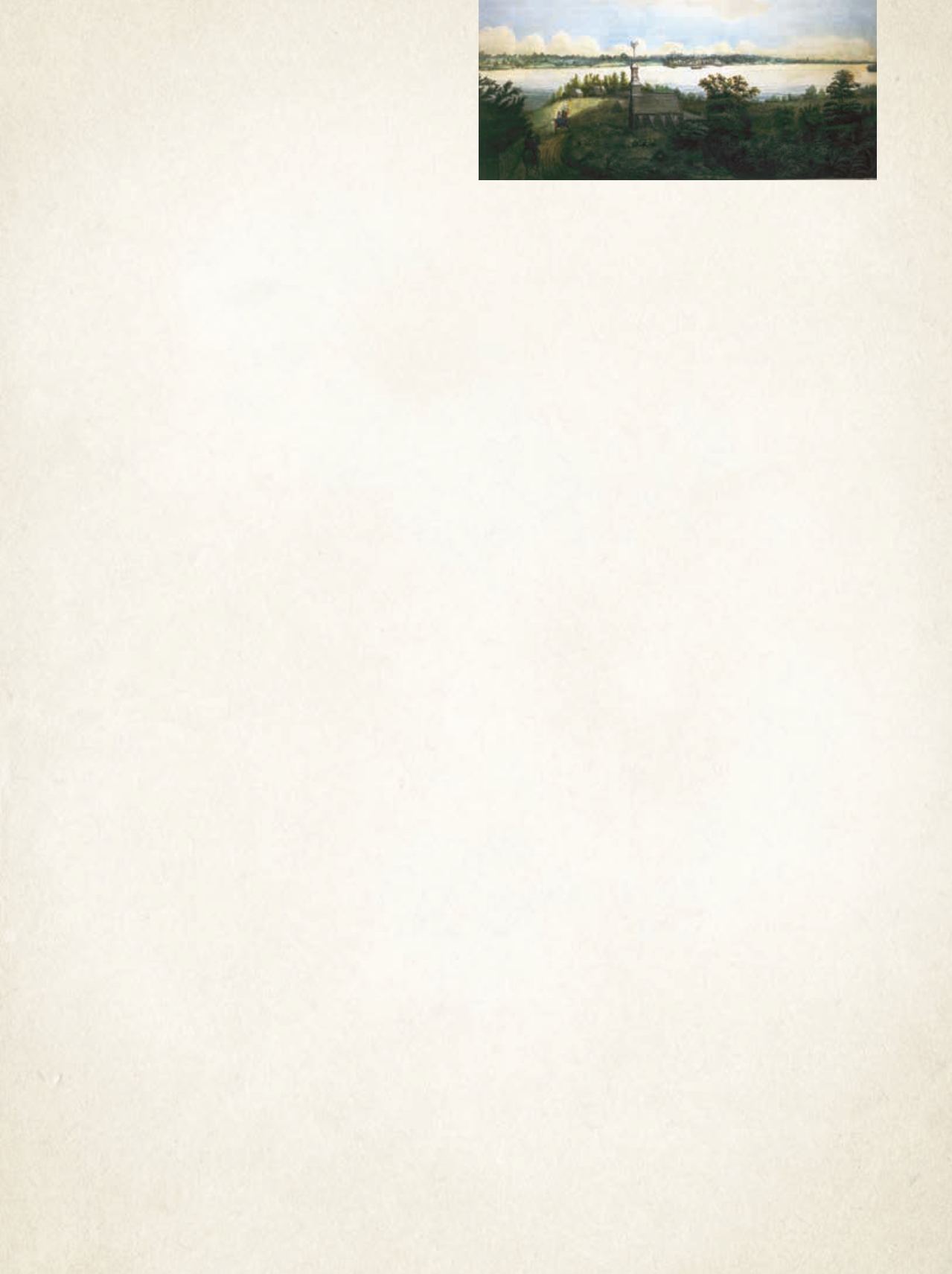
5
L
ong before there were any classrooms or laboratories on the
land where the University of Windsor now sits, education of a
slightly less formal variety had been taking place for years, according
to a local historian.
In 1748, French Jesuit missionaries relocated their mission from
Ille-aux-Bois-Blancs (Boblo Island) to the land now occupied by
the University’s main campus, after the Wyandot (also known as
Huron) confederacy deeded it to them.
Over the next several years, the French Crown granted tracts
of land to settlers on the south shore of the Detroit River in Petite
Côte—now known as LaSalle—as well as the property stretching
east to Windsor’s present day downtown, a settlement eventually
known as L’Assomption de la Pointe de Montréal.
It was the children of these settlers—people with surnames
like Gaudette, Drouillard, Mailloux and Reaume still common in
the area today—who walked to the mission for their lessons with
the priests.
“Besides religious services, the priests also offered educational
lessons for the children of farmers wealthy enough to pay for them,”
says Guillaume Teasdale, a sessional instructor in history.
Originally from Trois-Rivières, Quebec, Dr. Teasdale moved
here to teach about two years ago. He specializes in 18th-century
Canadian history, focusing on the complexities of French and
British attempts to colonize the St. Lawrence Valley and Great
Lakes regions.
He’s especially enthusiastic about the history of Windsor
and Detroit, and says there are great volumes of archival data,
including about 50,000 pages of land titles, marriage records, and
other government documents that he has found at the Detroit
Public Library.
“It’s been barely used by local historians,” he says. “Many
documents were handwritten in French, so a lot of people can’t read
them. It’s very exciting to discover so many sources that haven’t been
tapped, and there’s still so much to look at.”
When he travels along Riverside Drive adjacent to the Detroit
River, Teasdale can envision what it looked like in the days after
French explorer Antoine Laumet de La Mothe, sieur de Cadillac
founded the Fort of Detroit in 1701. He can see rows of farms on
the north shore of the river, in what is now downtown Detroit,
which the French Crown began by granting to settlers from the
St. Lawrence valley in 1734. When he arrives on campus, he can
imagine what it may have looked like here, too.
“There’s very little evidence, but I believe there would have
been a few buildings,” he says. “There was a church, a residence and
probably a barn, because the missionaries would have had livestock.”
One of the few pieces of visual evidence is a painting (above) by
Edward Walsh that depicts the property in 1804 and shows one of
three churches that stood there before the present-day Assumption
Church was constructed in 1845.
“That church was built by the Sulpicians in the 1780s,”Teasdale
says of the painting, part of the collection in the University of
Michigan’s Clements Library. It is also found in the book,
Frontier
Metropolis: Picturing Early Detroit, 1701-1838.
When the mission moved from Boblo, about 600 Wyandot
would visit regularly, but their numbers dwindled by 1800, Teasdale
says. In their place, more settlers arrived, especially after the parish
expanded its boundaries about 10 kilometres eastward to modern-
day Tecumseh, Ont., between 1768 and 1796.
“I guess they just didn’t feel that close to the French,”Teasdale
says of the Wyandot peoples. “There was no inter-marrying between
them and the missionaries may have lost interest in them because
they had French settlers to focus on.”
As the parish expanded, the need for a formal school was
recognized and in 1855, construction of Assumption College began.
It opened on Feb. 10, 1857 to 26 boarders and 60 day students,
offering classes in three departments: primary, classical
and mercantile.
“So many colleges were being established in the U.S. in the mid-
19th century,” says Teasdale. “It was part of that movement and it
was obvious to them that this was a great location.”
Assumption College was established by the Jesuits, but
transferred control to the Basilian Fathers after just seven months.
It changed its name to Assumption University in 1956, before
entering into a federation with the University of Windsor when it
was established in 1963.
As for Teasdale, he says that he hopes to continue his teaching
and delve deeper into the area’s history. “It’s a very interesting place
to be.The history of this area is very rich and very complex.”
V
RESEARCH
At left: Guillaume Teasdale, a sessional instructor in history. Above: An 1804 Edward Walsh painting depicts the early days of where the UWindsor campus now sits.
BY STEPHEN FIELDS
Our French Connection
LAY I NG THE FOUNDAT I ON FOR A UN I VERS I TY


